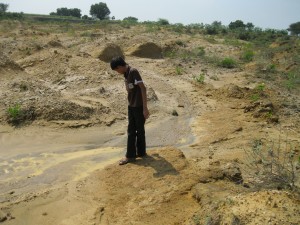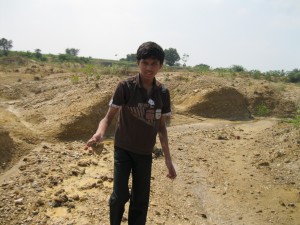The Karai Formation of Uttatur Group at Karai-Kulakkalnattam section in Perambalur district forms the lower part of the Cretaceous sedimentary succession of the Cauvery Basin. Tiwari et.al, (1996) considered the Karai area as the type area for Karai Formation. The Karai Formation is exposed as badlands with a series of conical mounds separated by gulleys. It is a wasteland with scanty vegetation and without any topsoil on either side of Karai-Kulakkalnattam road (along Alattur – Ariyalur road). The Karai Formation consists of grey-brown, gypsiferous, glauconitic mudstone and marl with sporadic thin inter-beds of siltstone, calcareous sandstone and coquinite particularly in its upper part – sporadic calcareous, sideritic and phosphatic concretions / nodules, celestite, and concretionary horizons occur in some intervals. A variety of marine fossils like ammonites, nautiloids, belemnites, worm tubes, pelecypods, gastropods and oysters occur in abundance. Krishnan Ayyasami (1990, 2006) based on the faunal assemblages had inferred that the lithounits of Karai Formation were deposited between Middle Cenomanian and Lower Turonian age. Ramkumar et.al. (2006) observed a gradual reduction in thickness, population of belemnites, phosphatic nodules and frequency of gypsum layers from south to north.
Courtesy To; Rajasree & Russel T sajeev ( World Fossil Society)
Key: WFS,Riffin T Sajeev,Russel T Sajeev,World Fossil Society,Karai Formation,Karai



 December 27th, 2015
December 27th, 2015  Riffin
Riffin 


 Posted in
Posted in  Tags:
Tags: 